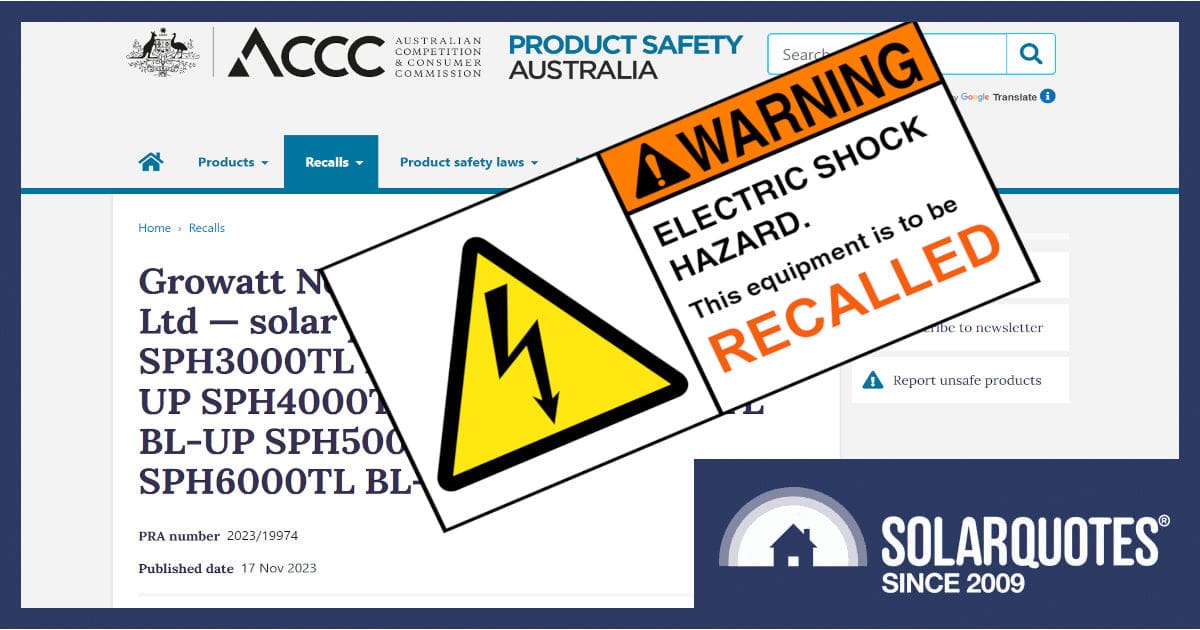
Important Clarification;
The ACCC has issued an urgent recall for some Growatt hybrid inverters. When badly installed, these units can expose the user to a live, hazardous voltage while operating.
GoodWe grid connect inverters have also been recalled for a non compliant plug assembly, exposing the user to a live, hazardous voltage; if the grid supply cable is disconnected.
More details below.
Recent incidents have raised concerns about the safety of these Growatt devices when the backup port, often referred to as the Emergency Power Supply (EPS) port, is left exposed.
Read on, and I’ll explain the potential risks.
The Danger Of Sloppy Inverter Design
Battery-backed hybrid inverters are currently very popular. These are officially known as Multiple Mode Inverters (MMIs) and are not technically a true uninterrupted power supply (UPS). However, they will generally provide enough power to keep the lights on during power outages caused by grid failures.
Many series hybrid inverters have big fat plugs to connect the wiring. They’re great if you have to change a dead unit over, but many electricians will explain they’re fiddly to wire up and demand very specific cable1 and they look like a mess when finished.
So, there are two AC plugs or ports on a series hybrid. The GRID port, which, as the name suggests, interacts with the incoming mains supply, and the EPS port provides a 230 Volt AC output to supply power when there’s a grid outage.
The Hazardous Scenario
Some hybrid inverters activate the EPS port by default, making it live as soon as the device is operational. However, if you have a hybrid unit installed but are yet to buy batteries or have the backup circuits connected, a critical oversight has been observed;
Failure to fit the supplied output connector, leaving the Back Up Port terminals exposed.
The large opening in the Growatt EPS plug means an official test finger can contact the metal pin, unlike an MC4 connector for solar input, which should ideally be blanked off as well.
Exposed live parts: the cardinal sin of electrical practice.
Leaving the plug off poses a serious risk of electric shock, as it allows direct contact with live parts. Electricians and Electrical Inspectors have a responsibility to ensure that all terminals of equipment comply with the safety standards outlined in AS/NZS 3000. These standards mandate preventing access to live parts before energisation, as detailed in AS/NZS 3000:2018 Clause 4.1.2 (c)&(d).
You must not be able to stick your fingers anywhere there is a metal part which might give you an electric shock.
These plugs have a twist collar to stop them from falling out, but the rules stipulate they must be secured using a tool for access. Like the difference between a jam jar and a child proof medicine bottle.
Safety Requirements
Electricians should meticulously follow the manufacturer’s instructions, ensuring that all parts, covers, and connectors provided are correctly fitted, leaving no exposed live parts.
And by the same token, electrical inspectors should look carefully to identify unsafe situations, and ensure they are rectified. Any electrical equipment posing an electric shock risk must not be installed or energised.
Any decent electrician wouldn’t leave an inverter with the cover off and internal parts exposed, but assuming that plugs are touch proof is where some fall down.
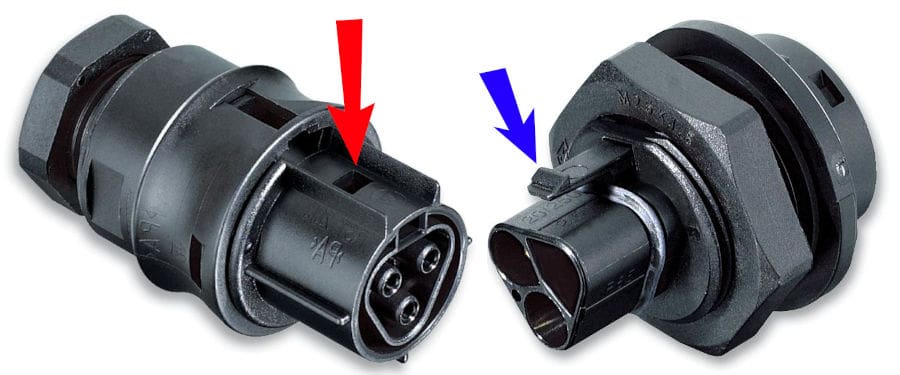
15 years ago, I installed these compliant touchproof Wieland plugs on solar inverters. A small screwdriver in the red window depresses the blue tang when releasing them.
Complacency Is A Killer
Since inception, inverters have been supplied with AC plugs that are inherently safe. Because they’re designed to be touch-proof and only removed with a tool. As new manufacturers have entered the market they haven’t adhered to the same standards.
- The recall for GoodWe centers on this issue. If you unplug the inverter without switching the AC supply off, the plug isn’t safe to leave open because it’s not touch proof.
- If the installation isn’t completed properly, the Growatt unit can have exposed live parts during normal operation.
- In both cases the respective plugs should only be accessible with a tool, and they’re deemed non-compliant because both can simply be screwed off by hand.
I have seen first-hand the qualified trades who just ignore the printed “quick install guide” because they’re often badly translated or too tiny to read. What’s needed are blindingly obvious warnings on the bag in which these connectors come in or tags on the inverter plugs themselves.
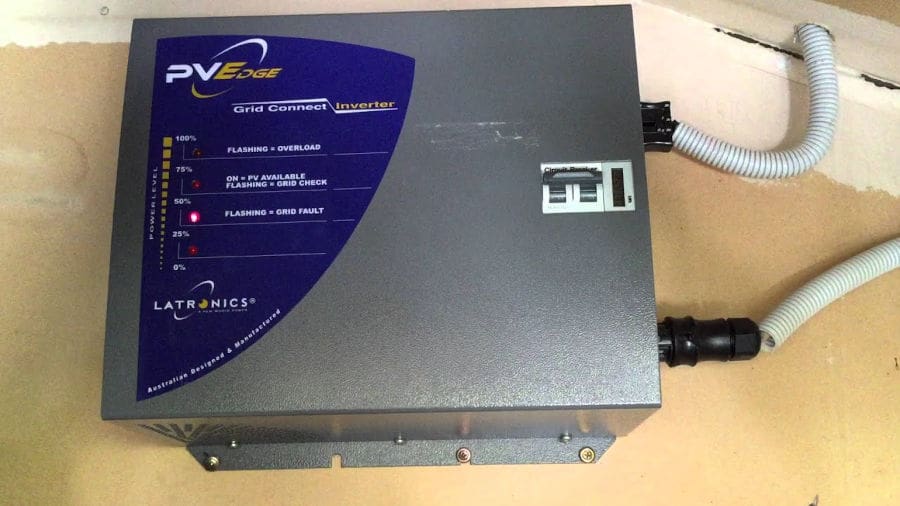
An Australian-made Latronics PVE, just like this one, still powers my house with a touch-proof AC plug to connect it. Similarly, vintage SMA SunnyBoy units were touch proof but not secured with a tool.
Manufacturer Non-Compliance Prompts Recalls
Some manufacturers have connectors that can be removed without the use of a tool, allowing access to live parts. This is a basic non-compliance with AS/NZS 4777.2 Clause 2.3.3.1 and is a product issue that EnergySafe is actively working with manufacturers to resolve for the safety and compliance of the Australian market.
It’s embarrassing for Growatt and GoodWe, but interestingly, the extra attention has brought Sungrow out in a proactive series of updated social posts to explain what some of the random pieces of plastic they supply in the box actually do.
Manufacturers may provide purpose-designed locking mechanisms, such as the one shown in the image below, to prevent unauthorised connector removal, but unless there’s some awareness, these separate parts can end up chucked in the bin.
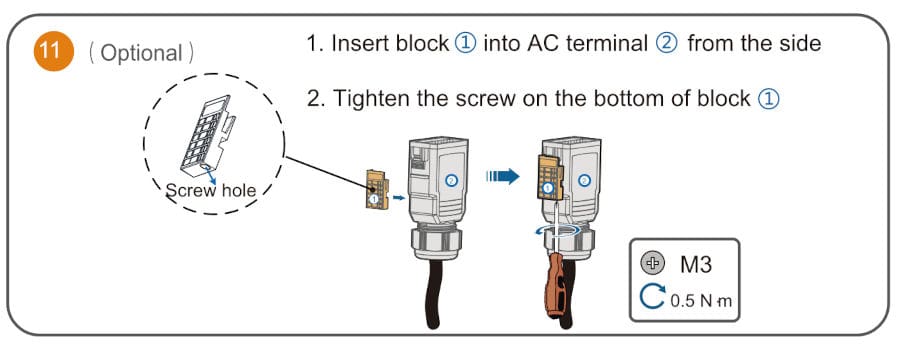
Note this leading manufacturer hosts these install instructions on their local website. They mention the lock device as optional, but in Australia, it isn’t. I have installed them, but I promise you that because they’re in a separate unmarked bag, many will be tossed away.
Check Your Inverter
Safety is paramount when dealing with electrical equipment, especially alternative supplies.
Confirm if you have a recalled GroWatt inverter, or a recalled GoodWe inverter, by checking these links for the ACCC’s recall notices.
If you have any other brand of solar inverter, especially something cheap from eBay, it may also be worth checking if the plugs on it are secure and can’t be removed by inquisitive hands without using some kind of tool. Click this link to read a useful explainer from EnergySafe Victoria. If you are concerned, contact the original installer who should be happy to confirm whether all EPS ports have been secured properly.
Update: 11 Jan 2024
Energy Safe Victoria deserve an honourable mention for being proactive in picking up and publicising technical problems in an effort to maintain good standards. Some people love to hate the nanny state, but ESV are doing their job.
However ESV have also damaged their own credibility by putting out a technical bulletin, aimed at the electrical industry, explaining a dangerous situation with one brand of hybrid inverter and also erroneously listing another brand with a similar but technically different problem.
I’m trying to remove some jargon so the average consumer can understand, but in the original version of this post I didn’t pick up where these two problems were conflated. As the author of this post, I need to give myself an uppercut for not clocking the difference when reading the two ACCC recall listings myself.
The response to this post does however provide a telling insight into the way these two manufacturers support their products, and treat the general public, which will be the subject of another article soon.
If you have a GoodWe MS-G3 single phase non-hybrid inverter then there is comprehensive guide from GoodWe Australia published on their website.
If you have a Growatt Hybrid SPH X000 TL BL-UP then email australia@ginverter.com or by phone on 1800 476 928. Neither Growatt or their distributor GoSolar have published any information on it themselves.
Footnotes
- 6mm² and 16mm² multi-strand circular UV stable; is a special order at the wholesaler ↩

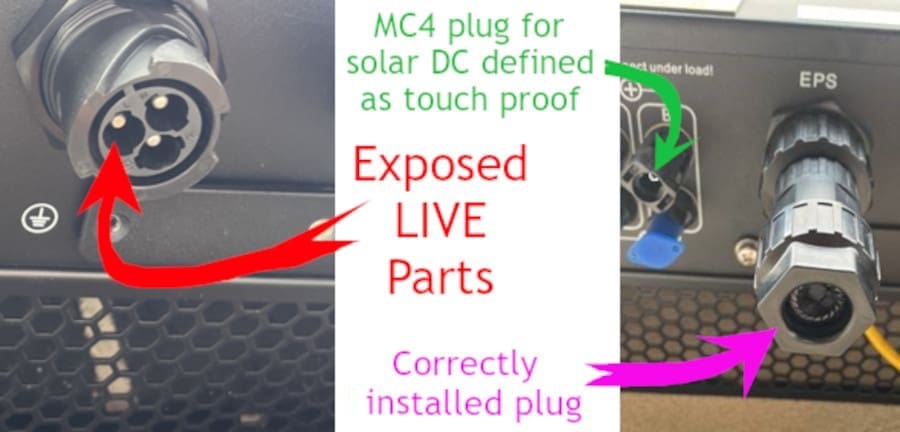
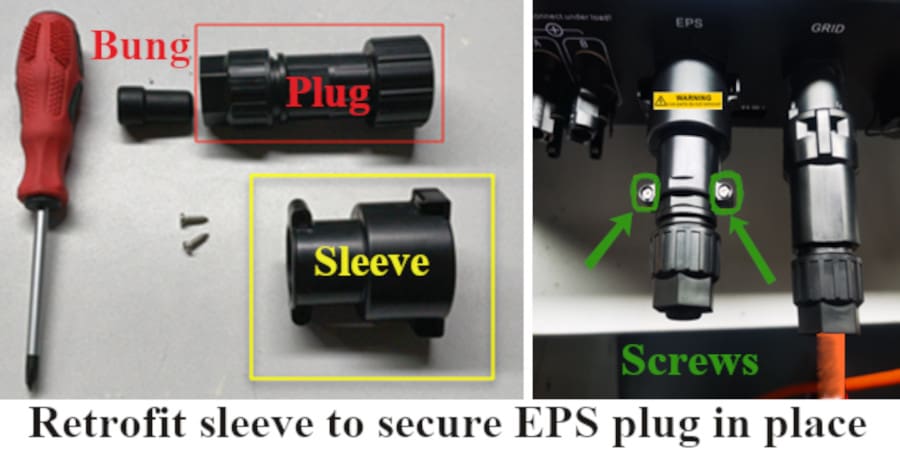
 RSS - Posts
RSS - Posts



How did this get approved in the first place? Doesn’t the inverter have to be inspected /tested for compliance with As4777.2 ? Isn’t this compliance supposed to be checked by the CEC before the inverter can be on the Approved Product List?
Hi Bruce
We’ve had an update for the post and there will be more to come.
Buy Peanuts get Monkeys!!
Why Growatt & Goodwe are still apart of your approved list is beyond me.
Finn should make sure anyone selling Growatt & Goodwe from Solar Quotes should be kicked off the “Reputable Company” list.
I hope the poor customer wont be paying out of pocket for the recall!!!
Growatt have never been on the approved list.
Goodwe are on it because they are generally well regarded as a budget option with a history of good support in Australia. But as an engineer with some experience of doing engineering risk assessments, I’m struggling to see how they can let a product ship with live terminals, so I’m considering whether they should stay on the list.
UPDATE: the Goodwe recall is for a non-hybrid inverter. There’s still a safety issue with it – but it is less serious IMO than the Growatt issue
At first I thought this headline was going to lead to a whole bunch of more work to do in a very time poor enviroment. Yet after reading, the issue is not with the inverters being ticking time bombs, but a simple sleeve retailers can add during installion. We don’t support Growatt, but have started using GoodWe Hybrid’s because they’re packed with features & is very well supported in Oz & also come as a great bang for your buck saving to customers looking at a full battery suite. I’m sure both brands will come to the party & encourage you to keep GoodWe on your list, Finn.
Hi Keith,
We’ve had an update for the post and there will be more to come. The affected GoodWe units are standard grid connect ones, not hybrids.
When you are setting up Goodwe hybrid inverter in the app if there is no EPS you can turn ESP off so the ESP pins are not active so then they would be safe. But if the EPS plug in on and active looks simple to fit sleeve.
Hi Aaron,
The activation of EPS is a good point to make.
We’ve had an update for the post and there will be more to come.
Hi George,
We’ve had an update for the post and there will be more to come.
You mentioned Sungrow explained what some of the random pieces of plastic do.I want to konw which medium it posted in.
It was a Sungrow social group if I recall correctly? May have been an installer mailing list?
Hi, can someone please contact me to confirm if my Goodwe battery is on the list?
Hi Bernard,
The GoodWe inverter that has been recalled doesn’t have a battery connected to it. GoodWe batteries have never been recalled to my knowledge.
Unlike LG Chem, which have been a terrible product.
The dangerous product in this instance is the Growatt Hybrid inverter.